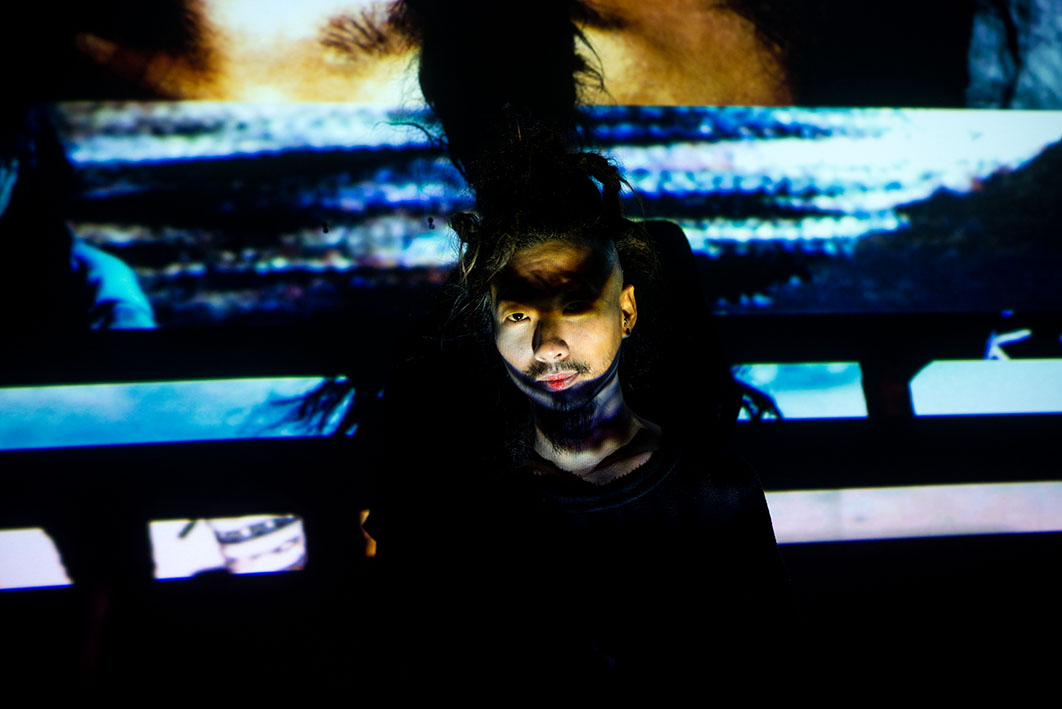The first time I see Sammy Chien, he is performing at the Vancouver Art Gallery’s FUSE for the Indian Summer Festival, and it feels conversational. He and his partner bowed, and a faux kung-fu sequence proceeded in front of a projected mash-up of Street Fighter and Buddhist imagery. In this more comic incarnation, chi flew, and the pratfalls felt fluid. It was staged, but intuitive to the immediate audience packed and kneeling on the gallery’s hardwood floor.
The second time I see Chien, he is inviting me into his apartment complex. Ornamented in a mohair robe, he takes me to the commons, down the stairs into a concrete room with amber lighting. Chien offers me water and dried mango.
At this point I can say that Sammy Chien is an interdisciplinary artist who works with video, electroacoustic and drone, and dance. Chien also participates in many collaborations that emphasize local cultures and specific geographies. These projects take him around the world. Just recently, he finished tenures in Berlin and Japan, and soon he’ll be pursuing further grants abroad.
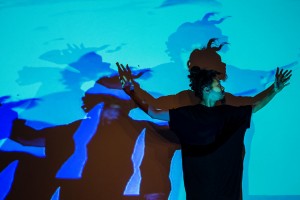
During our conversation Chien talks about connection, like a basin of collective psychic experience that allow people to transgress difference. But there’s an obvious point of connection that I think we both identify: it’s uncommon enough to register when two Asian men talk to each other about art in East Vancouver. Chien might place that coincidence on the continuum between deliberation and serendipity.
So this article plays out in a linear way. And the first thing we talk about is his experience of being a POC artist. We start with the five years – “that felt like 20” – he spent as a teenager growing up in Nova Scotia. Chien mentions the racism and social isolation of the Maritimes. And as I inquire about his most recent project, there’s a clear transmission, like he has anticipated its relevance, deliberately or intuitively, to his formative years.
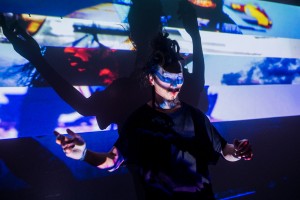
Nova Scotia is where Chien’s interdisciplinary drive emerged. He picked up filmmaking, which eventually took him to Vancouver, and SFU’s Film Production department. Chien tells me, “My first film was about racism, so it was a medium for me to express myself. But I would say I withstood racism with hip hop: I used to breakdance, and DJ, and rap, and do graffiti. As an Asian male person living in such a white town – what is the furthest I can go from the stereotype?”
Chien’s perspective has subtly shifted. Anti-racism is a core focus, and Sammy expands for me: “For some time I felt like I wanted to avoid talking about being Asian. For me, [avoiding] it was also a way to feel that I’m a free agent, I’m not a symbol. But I am! Like, I’m a free individual, I’m a human! But in the end, I am still a symbol, based on reaction, perception. If I only change the way I think, I can only go as far as my head.”
One of Chien’s ongoing projects is Chimerik似不像: a collective of artists that want to bridge new media and art, mainstream and underground, high and low. For Sammy, the metaphor of a chimera — a mythical beast made of composite animals –— is instructive: a mutant that defies codification, bristling against language’s limits.
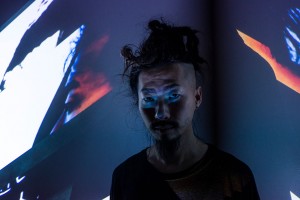
“Chimera is the core vision I’ve had for the last five years,” explains Chien. “I’m interested in obscurity, ambiguity. As human beings we’re scared of it. In a structural society, we want to define things, categorize them. But this nature can be detrimental to certain perspectives. I think it’s something we need to talk about – how do we embrace ambiguity?”
Ambiguity is a common theme in Chien’s stories. In 2016, Chien went to Berlin for a conference on Isadora, a software program which maps a dancer’s movements to a generative visual display. “During my residency, they put me in this guy’s apartment. His name was Kazuma Motomura. He’s half Japanese, half South African. He doesn’t quite look like me. But I guess there’s not a lot of Asian males in Berlin who do crazy stuff like we do … And then I met him on the day right before I left. As soon as I saw him, I was like ‘Dude, you’re fucking Kazuma Motomura, right?’ It’s crazy. I felt like I was ghosting his house, I was living someone’s life, someone’s identity.”
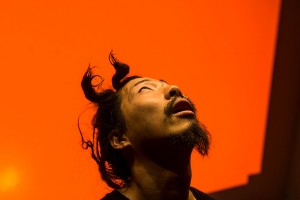
After connecting, Chien and Motomura met up in Japan. Collaboratively, they performed the show Lies/Harmony: A Dance After Fukushima for TPAM in Japan. Lies/Harmony is a work about reconciliation in the wake of the Fukushima Accident and government dissimulation. It’s an extension of his tendency to move back and forth between the site-specific and the general: the vastness of generational imperialism versus the specificity of Indigenous water-activism: “it’s the same thing we’re fighting for – just different forms and presentations.”
Chien’s ideation of politics shears close to his treatment of art, parallel strands that overlap and feed into the same system. Above all, what’s impressive about Chien’s practice is his drive to take ambiguity and activism into the realm of big-tent production. Artists often resign themselves to niche, but Chien wants his work to be seen, wants it to intersect with social mass and movement. It’s on this note that Chien shares a story with me about the biggest show he’s ever done in Taiwan.
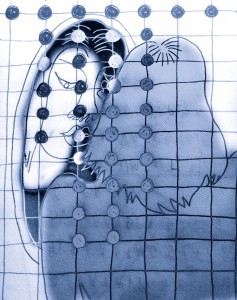
When I meet Chien, we have an hour to chat. I’m not sure if he’s as sensitive to this as I am, or if it’s a matter of chance, but Chien’s last story builds and surges, the clear climax of our conversation, replete with a decisive and instructive finale. If embellished, it’s subtle. And if nothing else, the story demonstrates that Chien is prepared to follow-through on the promise of his genre-blurring universalism.
“It was like a million dollar project. The progressive government booted out the conservatives, so they put a bunch of money into arts festivals in order to revive the culture in a particular region. They found an advertising firm, which found Chimerik. In the very beginning it was like ‘just make something cool and entertaining. People aren’t going to get your art.’ I was like sure, right.”
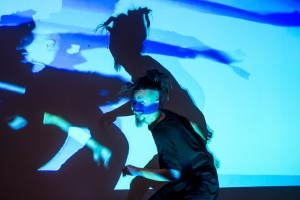
Chien does the voices for the ad execs. He does the voices the ad execs put on, too.
“It was very spiritual, about chakras and history, and the circle of life. They were like ‘it’s very meaningful, but remember, people are stupid.’ So I said ‘sure.’ And then I just kept going,” Chien laughs. “If you believe that your vision is right, that it’s going to fly, all other questions are artifice.”
“We built a stage on water, projection mapping on floating objects. We had a really kickass dancer performing with my soundscape mixing with Michael Red [Souns]’s music and experimental jazz — it was this deep dub with granulation and long expansive sound. I never checked with the exec.”
Pausing, Chien continues. “After the dress run, I was like, ‘Oh shit, they’re here.’”
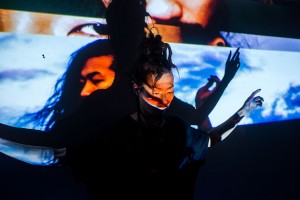
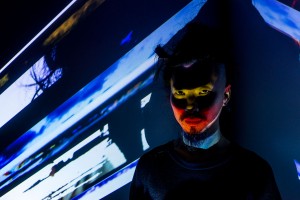
According to Chien, the executives loved it. Happily, he and his brother got paid. “I felt it was a big step, because it was a huge project. We had more than 30,000 people in attendance. It was so nerve-wracking. And I remember overhearing audiences saying – ‘I had no idea what it was about. But it was different than what I was used to seeing. I felt something, and something had changed for me’ – and that was something I wanted to give the audience rather than something flashy they enjoyed. To have something that might be challenging, but that they can take home with them.”
Chien smiles: “I thought the show was a really good evidence of what happens when you truly believe in yourself and know what you’re doing. But of course believing in yourself entails a lot of work, right? Because you could be a psychopath and also believe in yourself in killing people! But that’s not the right pathway – it may take years and years to cultivate the right kind of intuition, honestly and true connection with our soul, and it’s all interconnected.”
These stories feel like happenstance, like Chien’s parlance of ambiguity and connection are fed into the generative apparatus of his own performances.

History is key for Chien. Much of the activist drive in his works has to do with reconciliation of colonial histories and hegemonic control. From a distance, these strands feel splayed across his life’s canvas. From a distance, early developments are manifesting in new, myriad ways: “…in my beginning works, I did a lot of expansive trajectories. I often got the audience saying ‘I feel something has changed in me, but I’m not sure why.’ I worked with drones and electroacoustic music, brought people into long journeys and arcs.”
Chien, in addition to his new media acumen and creative intuition, is continuing to pursue dance in his own performance: “So in my last grant I called myself a dance artist … I have to be very careful because there are dancers who dedicate their lives to this art form. So I’m going to have to be really respectful when I say dance. But for that proposal to manifest, I had to be ready to manifest as a dance artist. I’m really open to changes, and I think the most important thing is to be present for the changes. What’s the right thing in the right context?”
In other presentations, Chien has compared artists to messengers, the classical motif of someone charged with divine inspiration. His identification of a universal element, intersections that loop into each other, apprehends a world of ebb and tide. The chimera is a morphing, multifarious creature. Catching one of its myriad zeniths is perhaps, in other words, a matter of the right thing in the right context.
X
See Sammy’s work at sammychien.com and follow him on Instagram @soar55 for updates and whereabouts.


